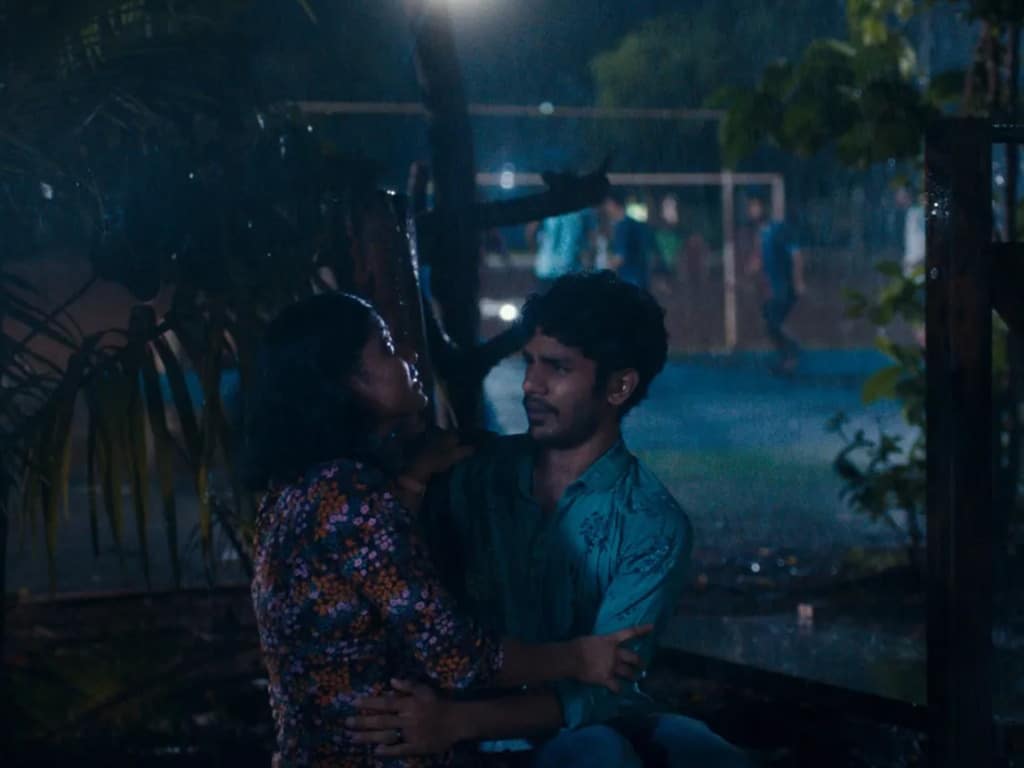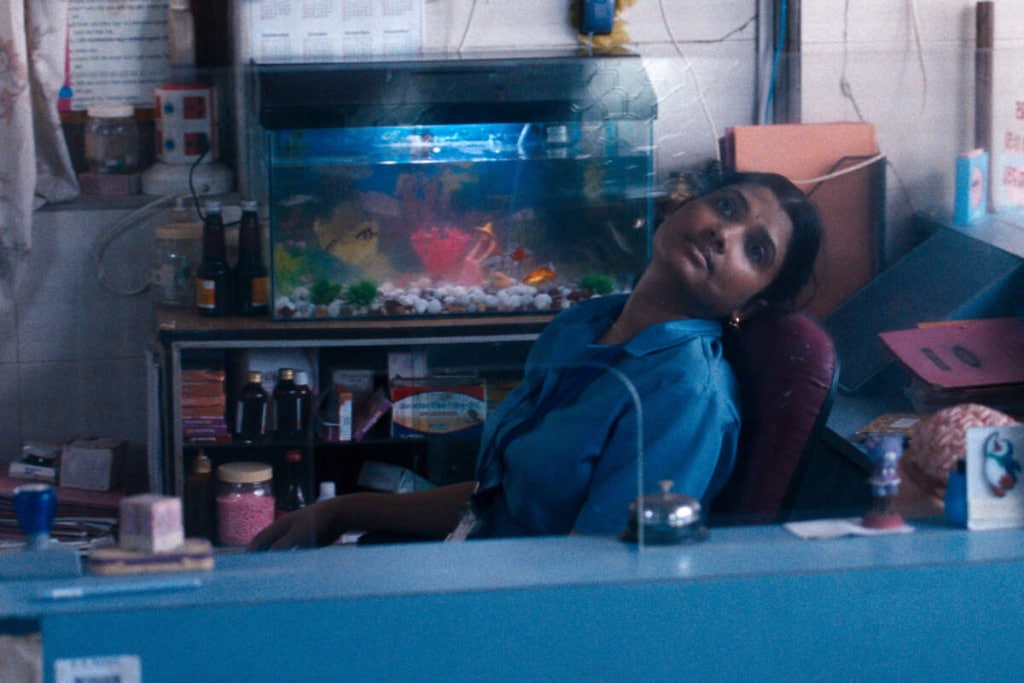
“Filmmaking is really hard for me”, says Payal Kapadia. “I realise that more and more. I’ve become less critical of everybody because it’s very difficult to make films.” While the statement is something that can pretty universally be agreed on (filmmaking is definitely not easy), it still feels, for a moment at least, odd to hear it come out of Kapadia’s mouth, considering she makes it look so damn effortless.
Her second feature All We Imagine as Light has just premiered in-competition at the Cannes film festival (the first Indian film in 30 years to do so) to such high praise that it’s immediately being touted as a frontrunner for this year’s Palme d’Or.
All We Imagine as Light is that rare film that has the ability to wash over you on a subconscious level as well as a narrative one, with every frame flowing seamlessly into the next like waves exhaling one by one on the shore. The enchanting, understated drama follows Prabha and Anu, two women from Kerala who move to Mumbai, searching for purpose as they attempt to carve out lives for themselves as nurses in the city. Though there’s melancholy to be found amongst the hustle and bustle of Mumbai, Kapadia insists that at the core of her story is the power of community between women. “It’s a joyful movie”, she declares, proudly.
Prior to the film’s premiere, Kapadia spoke to A Rabbit’s Foot about her experience making All We Imagine as Light, its gorgeous colour palette, and the contradictory nature of Mumbai.
Is it hard to get a film like this made back home in India?
I think more and more there are women-centric films getting made in India. In Cannes this year there are so many Indian films screening with women as the main protagonists. Being a woman, they’re the ideas that come to me first. It’s not about whether they’re hard or not to get made. Making films about women isn’t a choice—it’s what I need to do.
How much of your own experiences have you put into this film?
We’re all many things. We have experiences which we want to understand about ourselves. It’s not calculated—I grew up in a household with a lot of women and so I always think about the friendship among women. Oftentimes, in a country like mine, it’s the patriarchy that comes in the way of women supporting each other. Instead, we’re pitted against each other. I want us to move beyond that, and I thought about it a lot while making the movie.
What does the ‘We’ in the title mean to you?
All of us. Not just in India, everywhere. A lot of women can’t think of a way out of their situations, or another way that they can live their lives. I wanted to imagine other ways. Even though the stories may not be exactly mine, there’s a lot of compositing of different women I know, and maybe somewhere, myself. For me, cinema is about understanding the world around us, and ourselves. So there must be a bit of me in the movie too.
What kind of obstacles did you face during production?
It’s expensive to shoot in Mumbai, because it’s the film capital of India and all the big commercials get shot there. We were filming on a tight budget, and didn’t have the resources to get all the right permits to film there, so we did some documentary shooting with a small camera. Fortunately, my actors were really enthusiastic about it. We would be hiding in different places and they would just walk around in character until we got the shots we wanted.They embodied their characters in those moments. Having made a documentary before, I enjoy the freedom of walking around with a small camera, of not having everyone around you be aware of your motive as a filmmaker.

Tell me about the journey your characters go on from moving to Mumbai from Kerala, and what it is about Mumbai that causes them to struggle to find their place.
Mumbai is full of contradictions. It’s a city where you can come and earn, and you can do a lot better there than in other parts of the country. For women, it’s a little bit easier there than the rest of the country to work, also, so there’s a seeming sense of freedom. But it’s an illusion. You need money to access that freedom, otherwise you’re spending most of your life going up and down in trains, living in a shitty place and not having a very pleasant life. That’s the great contradiction of the city.
How has Mumbai changed for you over the years?
It’s changing its shape at the moment. We’re reclaiming land, so the physical shape of Mumbai as you see it on the map is changing as we speak. Mumbai is a city that’s always in a state of flux—there’s a real estate boom and many areas are being gentrified, all these giant buildings are being put up with gated communities where you need a QR code to enter. That’s something that really bothers me, but it’s part of the city now.
In the film, why was it important for your protagonists to be from Kerala? Does that have a personal resonance for you?
When I started writing the film, it was for my film school final year project. That was a while ago now. At the time, I had made friends with a nurse, and she would tell me a lot about what her training sessions would be like. With this in mind, as time went by, I decided to make a feature film about what it feels like to come to Mumbai as a woman to work and make the city her home. But a lot of women come from Kerala to Mumbai to work as nurses, so it felt authentic for them to come from there. I also felt like language is something that can alienate someone, and in Kerala they speak in Malayalam, not Hindi. So if you live in a city where the language doesn’t come natural to you, there’s a layer of alienation, but it also becomes a way for two people to share moments of privacy together. If you and I speak the same language, we could say the most intimate things together, even among a crowd of people. I like these different layers that one can have.

I love the piano melody that we hear recurring throughout the film, can you tell me about some of your musical choices here?
I wanted music that brings a sense of delight. I came across the music of the Ethiopian composer Emahoy, who passed away last year, and the moment I heard it an elated feeling washed over me. I don’t know how else to describe it. I wanted my characters to feel that elation too.
The colour palette of the film is also very beautiful.
In Mumbai, during the monsoon, the light is blue. It’s a longer magic hour period, and because the light is diffused, the contrast in colours shows deeper, and the blues start rising to the surface. If you’ve lived in a tropical country you’ll know that you can reach heights of 95% humidity. You’re sweating all the time. It’s raining a lot, so your walls are perpetually leaking. So everybody covers their balconies with blue plastic, and oftentimes you’ll see these really swanky buildings but covered in this blue plastic. Someone did a photo series on that, and I thought it was really cool. The Tarpaulins of Mumbai. So the blue became key to the first half of the movie, and the second part is set in Ratnagiri, which is in the southern district, just below Mumbai, and there the most iconic thing is the red rock, from which the soil is red. All the houses are made of this red rock, and so red became representative of that area and the second half of the film.
This is the first Indian movie to be in competition in three decades—how are you feeling about that?
I’m surprised that it got selected. It’s not a very big film. There are a lot of filmmakers selected for competition I studied when I was in film school. It’s a great honour.
The script is so layered. Was it hard to find the balance between all these different strands of the story?
Definitely, but it felt organic too. When you take a good amount of time to write something, you begin to change as a person. I’ve had this in my mind for five years. As I grew older, my preoccupations changed, and I started to identify more with other characters that I didn’t, or couldn’t identify with to that degree before. It changed how I was looking at the film. The more I aged, the more I grew, and the closer I felt to these characters.
Will the explicit aspects of the film spark controversy in India?
We’re getting a lot more films now that talk more openly about sexuality than they did before. There is censorship, no doubt, especially if you want a theatrical release. I don’t think the sex scene is explicit enough to be cut. But then, sometimes they censor cuss words in India, it all feels a bit random.
I was glad to see Divya Prabha in this film.
She’s fantastic! She was in a film called Ariyippu, which was at Locarno in 2022. It’s a wonderful film. So I was already a fan. I had initially invited her to try for the older woman’s role, as she’s always portrayed as somebody older than herself in films. I went to pick her up from the station and this girl stepped off the train…I knew immediately I couldn’t cast her in the older role. She’s so much like the younger character. She’s youthful and crazy and full of life. She’s a revelation. Conversely, for the older nurse, I had started writing the film just over half a decade ago, and at the time I wanted to cast her in the younger role. But we both grew older and things changed.

Is there a connection between All We Imagine As Light and Night of Knowing Nothing for you?
I was making them simultaneously, so probably, yes. Both films are about friendship. I think that’s the connection.
Were there any films you would watch to stay inspired while piecing together your vision for this movie?
I’m a huge cinephile, I’m always watching films. I’m a big fan of Miguel Gomes, and it’s really sad that I couldn’t see his film [Grand Tour] because I was doing press interviews [laughs]. We watched a lot of Satyajit Ray at film school, of course. Eric Rohmer. Claire Denis. Alice Rohrwacher. Agnes Varda. I’ve always loved Cleo from 5-7, and that idea that a character is moving around in the city, and it borders on non-fiction in a way. I hoped to do that with this film.
What’s next for you?
I’m thinking about another film which has a smaller fictional element to it. I love experimenting with the form and blurring the line between fiction and documentary. It gives me freedom too, to not have to focus on the elaborate set ups and the restrictions that India has on fiction features. I want to make fiction films too, but I just wish I could find some other way to work, where my creative freedom is equally valued.
You can read all our other 2024 Cannes coverage here.





